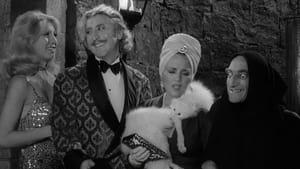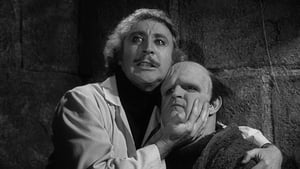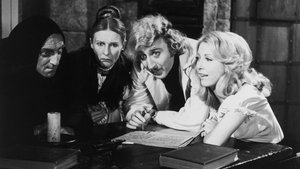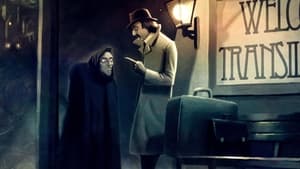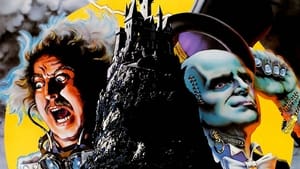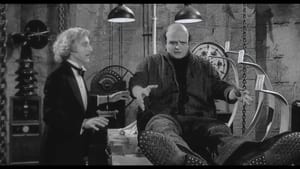Contact: info@alwanfilm.com
Video Sources 0 Views
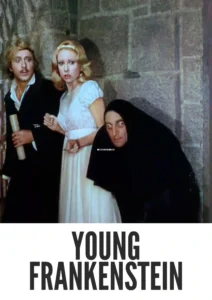
Synopsis
Review: Young Frankenstein 1974 Colorized – A Comic Masterpiece in Early Colorization

Introduction
Few films have managed to blend comedy and homage as seamlessly as Mel Brooks’ “Young Frankenstein” (1974). This classic film parodies the Universal horror films of the 1930s while delivering an original and hilarious story. In this article, we will delve into the significance of this film, especially considering its early colored version, and explore how colorization has impacted the viewing experience of “Young Frankenstein.”
Check The Full Colorized Movies List
Check Our Colorized Movies Trailer Channel
Understanding Young Frankenstein 1974: Director, Cast, and Genre
“Young Frankenstein” is a brilliant creation of Mel Brooks, a master of parody and satire. Brooks, known for his irreverent humor and sharp wit, co-wrote the screenplay with the film’s star, Gene Wilder. The cast is a who’s who of comedic talent: Gene Wilder as Dr. Frederick Frankenstein, Peter Boyle as the Monster, Marty Feldman as Igor, Cloris Leachman as Frau Blücher, Teri Garr as Inga, and Madeline Kahn as Elizabeth.
The film expertly parodies the horror genre, specifically the Frankenstein films of the 1930s, but it is much more than a simple spoof. It is a loving tribute that pays homage to the original films while carving out its own identity as a comedic tour de force.
Exploring the World of Young Frankenstein 1974: Plot and Characters
“Young Frankenstein” tells the story of Dr. Frederick Frankenstein (Gene Wilder), an American neurosurgeon who inherits his infamous grandfather’s estate in Transylvania. Initially determined to distance himself from his grandfather’s mad experiments, Frederick eventually succumbs to curiosity. With the help of his bumbling assistant Igor (Marty Feldman), lab assistant Inga (Teri Garr), and the mysterious housekeeper Frau Blücher (Cloris Leachman), Frederick brings a creature (Peter Boyle) back to life, with predictably hilarious results.
The film’s plot is driven by a series of comedic set-pieces and clever dialogue, blending physical comedy with verbal wit. Each character contributes to the film’s humor, from Igor’s deadpan delivery and physical gags to Frau Blücher’s unnerving presence and Inga’s naive charm.
The Art of Film Colorization
Film colorization, the process of adding color to black-and-white footage, is both an art and a science. It involves selecting appropriate colors for every element in a frame, ensuring consistency and accuracy while maintaining the artistic integrity of the original film. This process has evolved significantly since its inception, with modern techniques offering more subtle and realistic results than early attempts.
The process begins with extensive research into the film’s historical context, costume designs, and set decorations to ensure that the colors chosen are true to the period and the director’s vision. Advanced software and digital techniques are then used to apply these colors to the black-and-white footage.
Early Colored Films: A Brief History
The history of early colored films dates back to the silent era, with techniques such as hand-coloring, tinting, and toning used to add visual interest to black-and-white films. As technology advanced, processes like Technicolor and Eastmancolor brought more vibrant and consistent color to the silver screen, revolutionizing the way audiences experienced cinema.
Technicolor, introduced in the 1930s, was one of the most successful early color processes, known for its vivid hues and rich saturation. This process involved combining three strips of film, each capturing a different primary color, to create a full-color image. Eastmancolor, introduced in the 1950s, was a more cost-effective single-strip color process that became the industry standard.
Young Frankenstein 1974 and Its Early Colored Version
The decision to release “Young Frankenstein” in a colorized format was a bold move, given the film’s deliberate use of black-and-white to mimic the look of 1930s horror films. The colorized version offers a new perspective on the film, highlighting details that may have been overlooked in the original black-and-white version.
In this colorized rendition, the meticulous set designs, costumes, and makeup are brought to life with a new vibrancy. The gothic architecture of Frankenstein’s castle, the lush Transylvanian landscapes, and the characters’ elaborate costumes all benefit from the addition of color, enhancing the visual richness of the film.
The Debate Over Film Colorization
As with any form of artistic reinterpretation, film colorization has its proponents and detractors. Advocates argue that colorization can make classic films more accessible to modern audiences, particularly younger viewers who may be less inclined to watch black-and-white movies. Additionally, colorization can reveal details and enhance the visual storytelling of a film.
Critics, however, contend that colorization can undermine the artistic intent of the original filmmakers, who chose black-and-white for specific aesthetic and thematic reasons. In the case of “Young Frankenstein,” Mel Brooks’ decision to shoot in black-and-white was a deliberate homage to the classic horror films he was parodying, and some argue that this intent is compromised in the colorized version.
Examining Young Frankenstein 1974 as an Early Colored Film
Viewing “Young Frankenstein” in its colorized form provides a fresh lens through which to appreciate Mel Brooks’ comedic genius. The addition of color enhances the visual gags and brings new dimensions to the characters and settings. For instance, the vibrant hues of the laboratory equipment and the eerie glow of the reanimation scene add a new layer of visual humor and excitement.
However, this reinterpretation also raises questions about the preservation of artistic integrity. The original black-and-white cinematography was a conscious choice by Brooks to create a specific atmosphere and to pay tribute to the films that inspired “Young Frankenstein.” While the colorized version offers a new experience, it may not fully capture the original’s intended aesthetic and thematic resonance.
Influence and Legacy: Young Frankenstein 1974’s Impact on Cinema
“Young Frankenstein” has left an indelible mark on the world of comedy and film. Its influence can be seen in numerous parodies and homages in both film and television. The film’s blend of clever writing, physical comedy, and heartfelt tribute to classic horror has made it a timeless classic that continues to entertain and inspire.
Mel Brooks’ ability to blend humor with genuine affection for the source material set a new standard for parody films. “Young Frankenstein” not only pokes fun at the tropes of horror cinema but also demonstrates a deep understanding and respect for the genre. This approach has influenced countless filmmakers, who strive to balance humor and homage in their work.
Director’s Cinematic Legacy: Beyond Young Frankenstein 1974
Mel Brooks’ legacy as a filmmaker extends far beyond “Young Frankenstein.” Known for his sharp wit and fearless approach to comedy, Brooks has created a body of work that includes some of the most beloved and enduring comedies of all time. Films like “Blazing Saddles,” “The Producers,” and “Spaceballs” showcase his ability to tackle various genres with humor and intelligence.
Brooks’ influence can be seen in the work of contemporary comedians and filmmakers who continue to push the boundaries of comedy. His fearlessness in addressing controversial topics with humor and his skill in blending satire with genuine affection for his subjects have left an indelible mark on the world of cinema.
Themes Explored in Young Frankenstein 1974
At its heart, “Young Frankenstein” is a comedy, but it also explores themes of legacy, identity, and the ethical implications of scientific experimentation. Dr. Frederick Frankenstein’s struggle to come to terms with his family legacy and his desire to prove himself as a scientist drive much of the film’s narrative.
The film also delves into the ethical dilemmas associated with reanimating the dead, a theme that has been explored in various iterations of the Frankenstein story. Brooks uses humor to address these serious themes, creating a film that is both thought-provoking and entertaining.
Reception and Controversy Surrounding Young Frankenstein 1974
“Young Frankenstein” was met with critical acclaim upon its release and has since become a beloved classic. However, the colorized version has generated mixed reactions. While some appreciate the new perspective it offers, others argue that it detracts from the film’s original charm and authenticity.
Critics have praised the film for its sharp writing, stellar performances, and innovative blend of comedy and homage. The colorized version, however, has sparked debate about the merits of altering a film’s original presentation. While some viewers enjoy the added vibrancy, others feel that the black-and-white format is integral to the film’s identity.
Where to Watch Young Frankenstein 1974 Online
For those eager to experience the timeless brilliance of “Young Frankenstein,” the film is available on various streaming platforms, ensuring accessibility to audiences worldwide. Whether in its original black-and-white format or the early colored rendition, Brooks’ opus remains essential viewing for cinephiles and newcomers alike.
FAQs About Young Frankenstein 1974
Common queries surrounding “Young Frankenstein” include questions about its production, themes, and the impact of the colorized version. Addressing these frequently asked questions can provide viewers with a deeper understanding of the film’s enduring appeal and cultural significance.
Q: Why was “Young Frankenstein” originally shot in black-and-white?
A: Mel Brooks chose to shoot “Young Frankenstein” in black-and-white to mimic the look and feel of the classic Universal horror films of the 1930s. This decision was a deliberate homage to the films that inspired the parody.
Q: What are some of the film’s most iconic scenes?
A: “Young Frankenstein” features numerous iconic scenes, including the “Puttin’ on the Ritz” musical number, the reanimation sequence, and Igor’s “Walk this way” gag. These scenes have become cultural touchstones, celebrated for their comedic brilliance.
Q: How does the colorized version compare to the original?
A: The colorized version of “Young Frankenstein” offers a new visual experience, highlighting details and adding vibrancy to the film. However, some viewers may prefer the original black-and-white format, which maintains the aesthetic and thematic integrity of Brooks’ vision.
Conclusion
“Young Frankenstein” stands as a testament to Mel Brooks’ comedic genius and his ability to blend humor with homage. While the early colored version offers a fresh perspective, the original black-and-white format remains a vital part of the film’s identity. Regardless of how one chooses to experience it, “Young Frankenstein” endures as a classic that continues to entertain and inspire generations of viewers. As we navigate the ever-evolving landscape of cinema, let us celebrate the timeless brilliance of “Young Frankenstein” and honor Mel Brooks’ visionary legacy for years to come.
